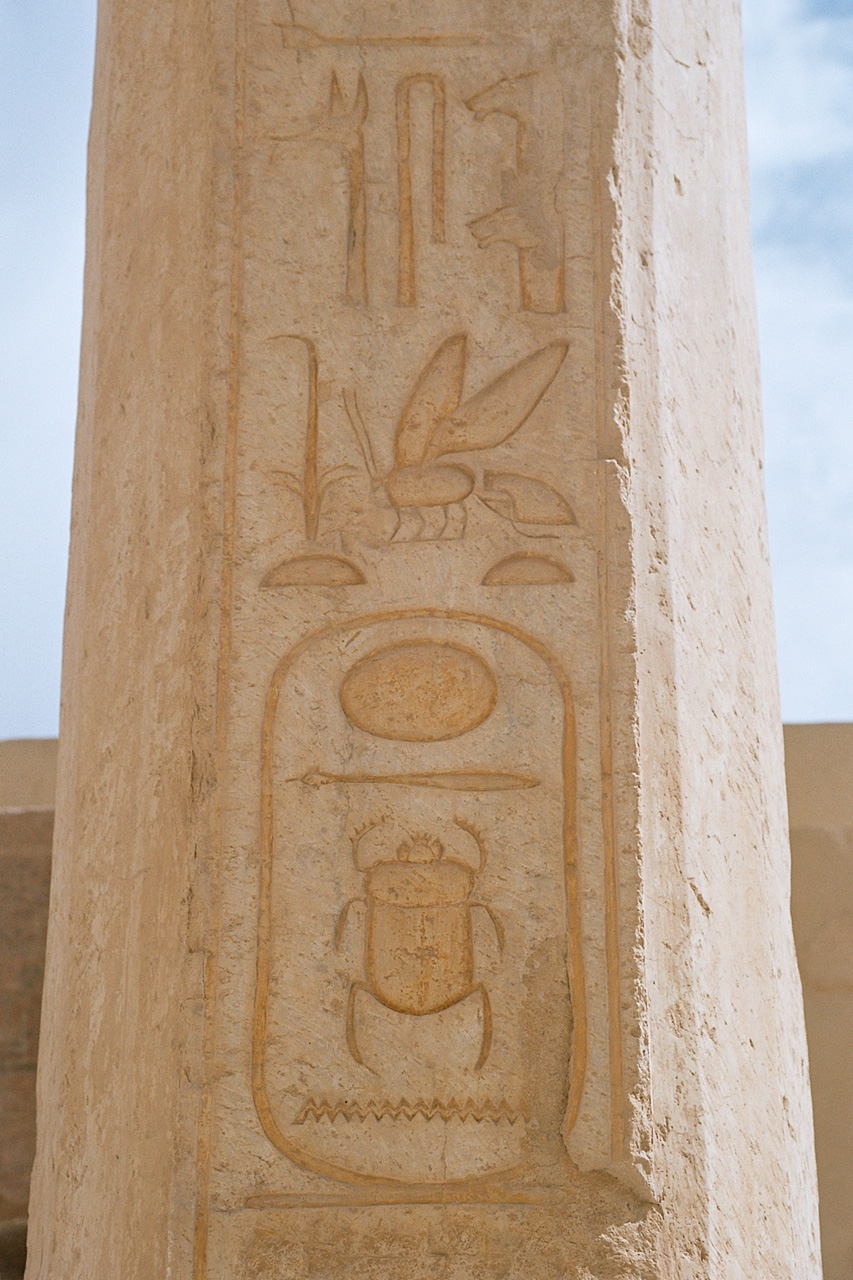|
Urkunden Des ægyptischen Altertums
''Urkunden des ægyptischen Altertums'' is a series of editions of Ancient Egyptian texts, published between 1903–1961. The series comprises eight volumes: * I. Urkunden des Alten Reichs (Old Kingdom) * II. Hieroglyphische Urkunden der Griechisch-Römischen Zeit (Greek and Roman periods) * III. Urkunden der Älteren Athiopenkönige ( Nubian Dynasty), ed. Heinrich Schäfer 190* IV. Urkunden der 18. Dynastie ( 18th Dynasty), ed. Hans Wolfgang Helck 1955–1958 * V. Religiöse Urkunden (religious texts) * VI. Urkunden Mythologischen Inhalts (mythological texts) * VII. Urkunden des Mittleren Reiches ( Middle Kingdom) * VIII. Historisch-biographische Urkunden der Zeit zwischen AR u. MR. (First Intermediate Period) Urkunden der 18. Dynastie Urkunden der 18. Dynastie is a collection of hieroglyphic texts from the 18th Dynasty of ancient Egypt, as compiled by German scholar Kurt Heinrich Sethe. This was part of Urkunden des ægyptischen Altertums. Urkunden der 18. Dynastie re ... [...More Info...] [...Related Items...] OR: [Wikipedia] [Google] [Baidu] |
Hatshepsut
Hatshepsut (; also Hatchepsut; Egyptian: '' ḥꜣt- špswt'' "Foremost of Noble Ladies"; or Hatasu c. 1507–1458 BC) was the fifth pharaoh of the Eighteenth Dynasty of Egypt. She was the second historically confirmed female pharaoh, after Sobekneferu. (Various other women may have also ruled as pharaohs or at least regents before Hatshepsut, as early as Neithhotep around 1,600 years prior.) Hatshepsut came to the throne of Egypt in 1478 BC. As the principal wife of Thutmose II, Hatshepsut initially ruled as regent to Thutmose III, a son of Thutmose II by another wife and the first male heir. While Thutmose III had inherited the throne at about two years old, Hatshepsut continued to rule by asserting her lineage as the daughter and only child of Thutmose I and his primary wife, Ahmose. Her husband Thutmose II was the son of Thutmose I and a secondary wife named Mutnofret, who carried the title 'King's daughter' and was probably a child of Ahmose I. Hatshepsut and Thutmos ... [...More Info...] [...Related Items...] OR: [Wikipedia] [Google] [Baidu] |
Thutmosis II
Thutmose II (sometimes read as Thutmosis or Tuthmosis II, Thothmes in older history works in Latinized Greek; Ancient Egyptian: /''ḏḥwty.ms''/ ''Djehutymes'', meaning "Thoth is born") was the fourth Pharaoh of the Eighteenth Dynasty of Egypt. His reign is generally dated from 1493 to 1479 BC. His body was found in the Deir el-Bahri Cache above the Mortuary Temple of Hatshepsut and can be viewed today in the National Museum of Egyptian Civilization in Cairo. Family Thutmose II was the son of Thutmose I and a minor wife, Mutnofret. He was, therefore, a lesser son of Thutmose I and chose to marry his fully royal half-sister, Hatshepsut, in order to secure his kingship. While he successfully put down rebellions in Nubia and the Levant and defeated a group of nomadic Bedouins, these campaigns were specifically carried out by the king's Generals, and not by Thutmose II himself. This is often interpreted as evidence that Thutmose II was still a minor at his accession. Thutmose I ... [...More Info...] [...Related Items...] OR: [Wikipedia] [Google] [Baidu] |
Thutmosis I
Thutmose I (sometimes read as Thutmosis or Tuthmosis I, Thothmes in older history works in Latinized Greek; Egyptian language, Ancient Egyptian: ''wikt:ḏḥwtj, ḏḥwtj-wikt:ms#Egyptian, ms'', ''Tʼaḥawtī-mīsaw'', , meaning "Thoth is born") was the third pharaoh of the Eighteenth Dynasty of Egypt, 18th Dynasty of History of Ancient Egypt, Egypt. He received the throne after the death of the previous king, Amenhotep I. During his reign, he campaigned deep into the Levant and Nubia, pushing the borders of Egypt farther than ever before in each region. He also built many temples in Egypt, and a tomb for himself in the Valley of the Kings; he is the first king confirmed to have done this (though Amenhotep I may have preceded him). Thutmose I's reign is Thutmose I#Dates and length of reign, generally dated to 1506–1493 BC, but a minority of scholars—who think that astrological observations used to calculate the timeline of ancient Egyptian records, and thus the reign of Thu ... [...More Info...] [...Related Items...] OR: [Wikipedia] [Google] [Baidu] |
Hyksos
Hyksos (; Egyptian '' ḥqꜣ(w)- ḫꜣswt'', Egyptological pronunciation: ''hekau khasut'', "ruler(s) of foreign lands") is a term which, in modern Egyptology, designates the kings of the Fifteenth Dynasty of Egypt (fl. c. 1650–1550 BC). The seat of power of these kings was the city of Avaris in the Nile delta, from where they ruled over Lower and Middle Egypt up to Cusae. In the ''Aegyptiaca'', a history of Egypt written by the Greco-Egyptian priest and historian Manetho in the 3rd century BC, the term Hyksos is used ethnically to designate people of probable West Semitic, Levantine origin. While Manetho portrayed the Hyksos as invaders and oppressors, this interpretation is questioned in modern Egyptology. Instead, Hyksos rule might have been preceded by groups of Canaanite peoples who gradually settled in the Nile delta from the end of the Twelfth Dynasty onwards and who may have seceded from the crumbling and unstable Egyptian control at some point during the Thirteent ... [...More Info...] [...Related Items...] OR: [Wikipedia] [Google] [Baidu] |
Horemheb
Horemheb, also spelled Horemhab or Haremhab ( egy, ḥr-m-ḥb, meaning "Horus is in Jubilation") was the last pharaoh of the Eighteenth dynasty of Egypt, 18th Dynasty of Egypt (1550–1295 BC). He ruled for at least 14 years between 1319 BC and 1292 BC. He had no relation to the preceding royal family other than by marriage to Mutnedjmet, who is thought (though disputed) to have been the daughter of his predecessor Ay (pharaoh), Ay; he is believed to have been of common birth. Before he became pharaoh, Horemheb was the commander in chief of the army under the reigns of Tutankhamun and Ay (pharaoh), Ay. After his accession to the throne, he reformed the Egyptian state and it was under his reign that official action against the preceding Amarna Period, Amarna rulers began. Due to this, he is considered the ruler who restabilized his country after the troublesome and divisive Amarna Period. Horemheb demolished monuments of Akhenaten, reusing the rubble in his own ... [...More Info...] [...Related Items...] OR: [Wikipedia] [Google] [Baidu] |
Amenhotep II
Amenhotep II (sometimes called ''Amenophis II'' and meaning ''Amun is Satisfied'') was the seventh pharaoh of the Eighteenth Dynasty of Egypt. Amenhotep inherited a vast kingdom from his father Thutmose III, and held it by means of a few military campaigns in Syria; however, he fought much less than his father, and his reign saw the effective cessation of hostilities between Egypt and Mitanni, the major kingdoms vying for power in Syria. His reign is usually dated from 1427 to 1401 BC. His consort was Tiaa, who was barred from any prestige until Amenhotep's son, Thutmose IV, came into power. Family and early life Amenhotep II was born to Thutmose III and a minor wife of the king: Merytre-Hatshepsut. He was not, however, the firstborn son of this pharaoh; his elder brother Amenemhat, the son of the great king's chief wife Satiah, was originally the intended heir to the throne since Amenemhat was designated the 'king's eldest son" and overseer of the cattle of Amun in Year 2 ... [...More Info...] [...Related Items...] OR: [Wikipedia] [Google] [Baidu] |
Thutmosis III
Thutmose III (variously also spelt Tuthmosis or Thothmes), sometimes called Thutmose the Great, was the sixth pharaoh of the Eighteenth Dynasty. Officially, Thutmose III ruled Egypt for almost 54 years and his reign is usually dated from 28 April 1479 BC to 11 March 1425 BC, from the age of two and until his death at age fifty-six; however, during the first 22 years of his reign, he was coregent with his stepmother and aunt, Hatshepsut, who was named the pharaoh. While he was shown first on surviving monuments, both were assigned the usual royal names and insignia and neither is given any obvious seniority over the other. Thutmose served as the head of Hatshepsut's armies. During the final two years of his reign, he appointed his son and successor, Amenhotep II, as his junior co-regent. His firstborn son and heir to the throne, Amenemhat, predeceased Thutmose III. He would become one of the most powerful pharaohs of the 18th dynasty. Becoming the sole ruling pharaoh of the ... [...More Info...] [...Related Items...] OR: [Wikipedia] [Google] [Baidu] |
Fascicle (book)
In literature, a serial is a printing or publishing format by which a single larger work, often a work of narrative fiction, is published in smaller, sequential instalments. The instalments are also known as ''numbers'', ''parts'' or ''fascicles'', and may be released either as separate publications or within sequential issues of a periodical publication, such as a magazine or newspaper. Serialisation can also begin with a single short story that is subsequently turned into a series. Historically, such series have been published in periodicals. Popular short-story series are often published together in book form as collections. Early history The growth of moveable type in the 17th century prompted episodic and often disconnected narratives such as ''L'Astrée'' and '' Le Grand Cyrus''. At that time, books remained a premium item, so to reduce the price and expand the market, publishers produced large works in lower-cost instalments called fascicles. These had the added attr ... [...More Info...] [...Related Items...] OR: [Wikipedia] [Google] [Baidu] |
Kurt Heinrich Sethe
Kurt Heinrich Sethe (30 September 1869 – 6 July 1934) was a noted German Egyptologist and philologist from Berlin. He was a student of Adolf Erman. Sethe collected numerous texts from Egypt during his visits there and edited the '' Urkunden des ægyptischen Altertums'' which is a standard catalogue of Ancient Egyptian literature and text. Among Sethe's many contributions to Egyptology, two are singled out by Gardiner (p. 433): "...the pronunciation of Middle Egyptian... The chief authorities to be consulted are Sethe's great work on the Egyptian verb, and a much later brilliant article entitled ''Die Vokalisation des Ägyptischen'' in ''Zeitschrift der deutschen morgenländischen Gesellschaft''"" (1923). Actually, Sethe was the first one to put forth a systematic theory of the Egyptian verb; it was no easy accomplishment, since the inflection of the Egyptian verb was done mainly by changing the vowels, and the Egyptians only wrote consonants. Among Sethe's students wer ... [...More Info...] [...Related Items...] OR: [Wikipedia] [Google] [Baidu] |
First Intermediate Period
The First Intermediate Period, described as a 'dark period' in ancient Egyptian history, spanned approximately 125 years, c. 2181–2055 BC, after the end of the Old Kingdom. It comprises the Seventh (although this is mostly considered spurious by Egyptologists), Eighth, Ninth, Tenth, and part of the Eleventh Dynasties. The concept of a "First Intermediate Period" was coined in 1926 by Egyptologists Georg Steindorff and Henri Frankfort. Very little monumental evidence survives from this period, especially from the beginning of the era. The First Intermediate Period was a dynamic time in which rule of Egypt was roughly equally divided between two competing power bases. One of the bases was at Heracleopolis in Lower Egypt, a city just south of the Faiyum region, and the other was at Thebes, in Upper Egypt. It is believed that during that time, temples were pillaged and violated, artwork was vandalized, and the statues of kings were broken or destroyed as a result of the pos ... [...More Info...] [...Related Items...] OR: [Wikipedia] [Google] [Baidu] |






